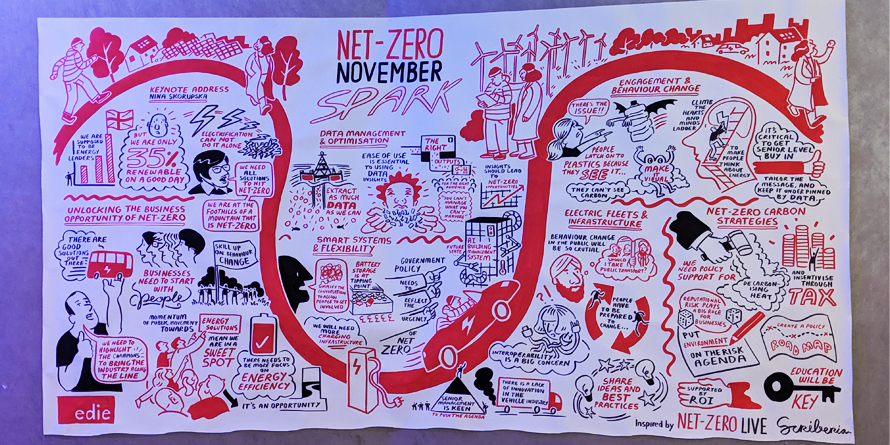Posted on: 29/11/2019
Following the conclusion of the latest edie Energy Leaders Club event where Lisa Bunting, Commercial Manager, hosted two roundtable discussions on smart systems and flexibility, she outlines key takeaways provided by energy managers at the forefront of the UK’s efforts to decarbonise and achieve net-zero targets.
It was clear from the outset of the second annual edie ‘Spark!’ event for members of the Energy Leaders Club, that flexibility would be a popular topic. With companies having varied levels of experience engaging in flexibility, there was a lively discussion with plenty of examples, insights and questions shared among peers and it was great to be able to host the roundtable discussions alongside Caroline Bragg, Chair and Facilitator, from the Association for Decentralised Energy (ADE).
There was a consensus across both roundtable discussions that flexibility is required, to ensure that we meet demands for the future energy system and decarbonise at the rates needed to meet net-zero carbon reduction targets.
Taking incremental steps to build flexibility:
Those new to flexibility were keen to understand whether it was best to spend time putting a master plan in place, or just get started. We went on to speak at length about the benefits of experiential learning on the job, as there are basic ways to build an understanding of smart systems and flexibility by taking incremental steps.
SmartestEnergy provided examples of customers who take manual steps to do something as easy as turning the lights off at key times to take advantage of flexibility revenues on offer. Starting on a flexibility journey, doesn’t have to involve costly capital expenditures or processes.
However, at the other end of the spectrum, SmartestEnergy is also experienced with integrating with complex and fast responding assets too. We take an approach of understanding the operational parameters we can work within, then select the optimal revenue streams in the market to maximise revenues for customers. At this level, it’s key to have a partner like SmartestEnergy that understands the market and has the technical capabilities to automate processes and respond quickly to market movements.
Common misconceptions:
During the sessions, we were able to overcome some common misconceptions to build a business case for companies of any size considering flexibility as an additional revenue stream:
- Misconception 1: You have to have a large volume to participate
Importantly, small sites (250kW+) can be aggregated and offered to the grid; success stories have even been demonstrated at a much smaller domestic level by others. You don’t have to be a large business to take part.
- Misconception 2: Flexibility is linked exclusively to diesel generators, batteries and electric vehicles (EVs)
The truth is, lots of assets can participate, including Batteries and EVs with a vehicle to grid capability, but in order to onboard more EVs we need a grid that can cope; ultimately this means more participation in flexibility is required. It’s important to note that diesel generators are no longer able to participate in ancillary services.
Important considerations:
Businesses around the table taking part in discussions highlighted that the government has a key role to play in helping provide a long-term vision for policy and sustainable markets.
Understanding that net-zero requires flexibility, roundtable participants left with a desire to become more active energy market participants and build the business case for added flexibility at their respective companies considering the extra revenues available.
Additional post-event remark:
Since this event, we’ve had confirmation from Ofgem about the Targeted Charging Review, which includes Traids moving to a fixed charge. Look out for our blog next week where we cover this in more detail.

 United States
United States Australia
Australia






